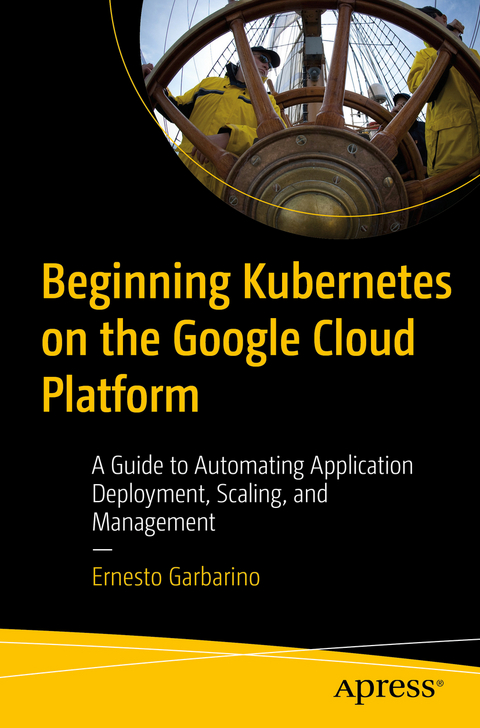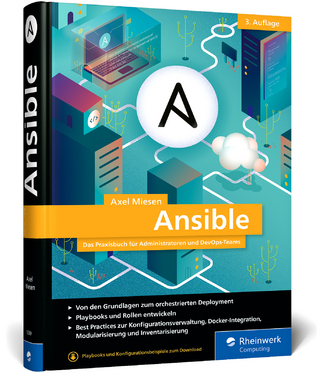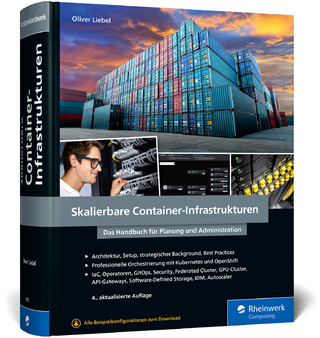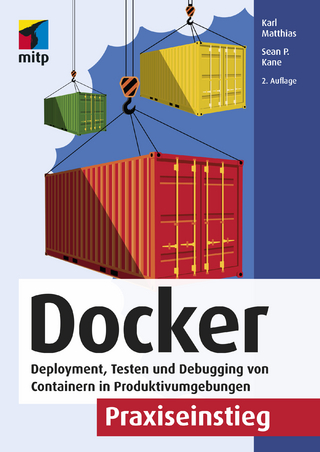
Beginning Kubernetes on the Google Cloud Platform
A Guide to Automating Application Deployment, Scaling, and Management
Seiten
2019
|
1st ed.
Apress (Verlag)
978-1-4842-5490-5 (ISBN)
Apress (Verlag)
978-1-4842-5490-5 (ISBN)
Use this beginner’s guide to understand and work with Kubernetes on the Google Cloud Platform and go from single monolithic Pods (the smallest unit deployed and managed by Kubernetes) all the way up to distributed, fault-tolerant stateful backing stores.
You need only a familiarity with Linux, Bash, and Python to successfully use this book. Proficiency in Docker or cloud technology is not required. You will follow a learn-by-doing approach, running small experiments and observing the effects.
Google open sourced Kubernetes in 2015 and now it is the industry standard in container orchestration. It has been adopted by all leading vendors of cloud, on-prem, and hybrid infrastructure services: Microsoft (Azure AKS), Amazon (AWS EKS), IBM (IBM Cloud Kubernetes Services), Alibaba Cloud (ACK), RedHat (OpenShift), and Pivotal (PKS). Even though Kubernetes is offered by all of the market-leading cloud providers, the Google Cloud Platform (GCP) offers anintegrated shell (Google Cloud Shell) and a $300 credit to get started, which makes it the ideal platform to not only learn Kubernetes but also to implement final production workloads.
What You Will Learn
Set up a Kubernetes cluster in GCP
Deploy simple Docker images using monolithic Pods
Arrange highly available and highly scalable applications using Deployments
Achieve zero-downtime deployments using the Service controller
Externalize configuration using ConfigMaps and Secrets
Set up batch processes and recurrent tasks using Jobs and CronJobs
Install horizontal (sidecar pattern) services using DaemonSets
Implement distributed, stateful backing stores using StatefulSets
Who This Book Is For
Beginners with basic Linux admin and scripting skills (Bash and Python). Proficiency with Docker is not required as all examples in the book use off-the-shelf public images from Docker Hub.
You need only a familiarity with Linux, Bash, and Python to successfully use this book. Proficiency in Docker or cloud technology is not required. You will follow a learn-by-doing approach, running small experiments and observing the effects.
Google open sourced Kubernetes in 2015 and now it is the industry standard in container orchestration. It has been adopted by all leading vendors of cloud, on-prem, and hybrid infrastructure services: Microsoft (Azure AKS), Amazon (AWS EKS), IBM (IBM Cloud Kubernetes Services), Alibaba Cloud (ACK), RedHat (OpenShift), and Pivotal (PKS). Even though Kubernetes is offered by all of the market-leading cloud providers, the Google Cloud Platform (GCP) offers anintegrated shell (Google Cloud Shell) and a $300 credit to get started, which makes it the ideal platform to not only learn Kubernetes but also to implement final production workloads.
What You Will Learn
Set up a Kubernetes cluster in GCP
Deploy simple Docker images using monolithic Pods
Arrange highly available and highly scalable applications using Deployments
Achieve zero-downtime deployments using the Service controller
Externalize configuration using ConfigMaps and Secrets
Set up batch processes and recurrent tasks using Jobs and CronJobs
Install horizontal (sidecar pattern) services using DaemonSets
Implement distributed, stateful backing stores using StatefulSets
Who This Book Is For
Beginners with basic Linux admin and scripting skills (Bash and Python). Proficiency with Docker is not required as all examples in the book use off-the-shelf public images from Docker Hub.
Ernesto Garbarino is a consultant specialized in the Digital, Cloud, and DevOps domains. His 20 year experience ranges from working with early start-ups and entrepreneurial organizations during the dot com era to senior consultancy work in blue chip industries including telecoms, logistics, and banking.
Chapter 1: Introduction.- Chapter 2: Pods.- Chapter 3: Deployments and Scaling.- Chapter 4: Service Discovery.- Chapter 5: ConfigMap and Secrets.- Chapter 6: Jobs.- Chapter 7: CronJobs.- Chapter 8: DaemonSets.- Chapter 9: StatefulSets.
| Erscheinungsdatum | 10.12.2019 |
|---|---|
| Zusatzinfo | 4 Illustrations, black and white; XI, 324 p. 4 illus. |
| Verlagsort | Berkley |
| Sprache | englisch |
| Maße | 155 x 235 mm |
| Themenwelt | Informatik ► Betriebssysteme / Server ► Virtualisierung |
| Mathematik / Informatik ► Informatik ► Netzwerke | |
| Schlagworte | application deployment • Bash • Cloud • ConfigMaps • containers • DaemonSets • Docker • GCP • Google Cloud Platform • Kubernetes • Linux • Linux admin • Monolithic pods • Python • StatefulSets |
| ISBN-10 | 1-4842-5490-2 / 1484254902 |
| ISBN-13 | 978-1-4842-5490-5 / 9781484254905 |
| Zustand | Neuware |
| Informationen gemäß Produktsicherheitsverordnung (GPSR) | |
| Haben Sie eine Frage zum Produkt? |
Mehr entdecken
aus dem Bereich
aus dem Bereich
Das Praxisbuch für Admins und DevOps-Teams
Buch | Hardcover (2025)
Rheinwerk (Verlag)
39,90 €
das Handbuch für Planung und Administration
Buch | Hardcover (2023)
Rheinwerk (Verlag)
79,90 €
Deployment, Testen und Debugging von Containern in …
Buch | Softcover (2020)
MITP (Verlag)
10,00 €


